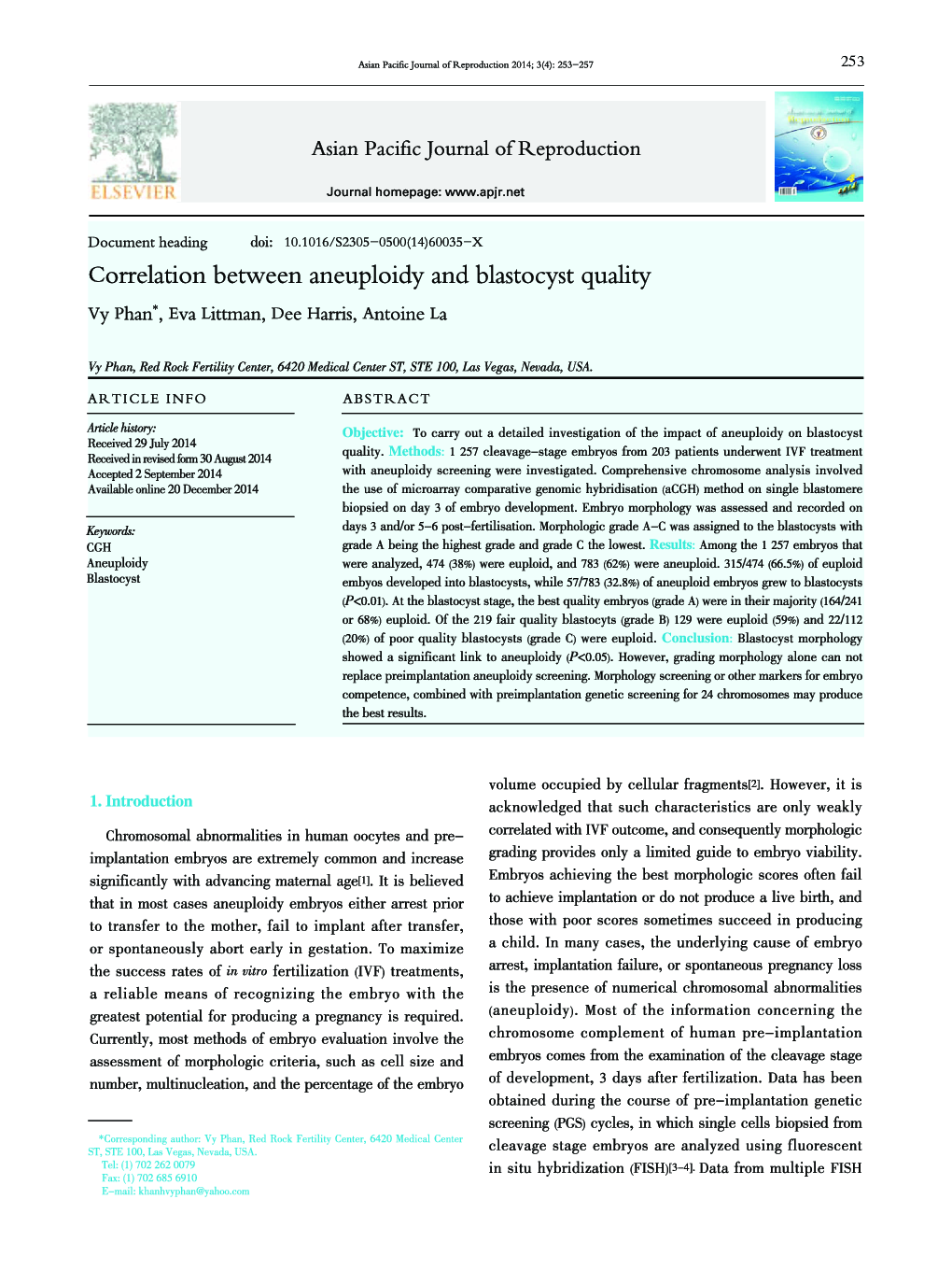| Article ID | Journal | Published Year | Pages | File Type |
|---|---|---|---|---|
| 3453658 | Asian Pacific Journal of Reproduction | 2014 | 5 Pages |
ObjectiveTo carry out a detailed investigation of the impact of aneuploidy on blastocyst quality.Methods1 257 cleavage-stage embryos from 203 patients underwent IVF treatment with aneuploidy screening were investigated. Comprehensive chromosome analysis involved the use of microarray comparative genomic hybridisation (aCGH) method on single blastomere biopsied on day 3 of embryo development. Embryo morphology was assessed and recorded on days 3 and/or 5–6 post-fertilisation. Morphologic grade A-C was assigned to the blastocysts with grade A being the highest grade and grade C the lowest.ResultsAmong the 1 257 embryos that were analyzed, 474 (38%) were euploid, and 783 (62%) were aneuploid. 315/474 (66.5%) of euploid embyos developed into blastocysts, while 57/783 (32.8%) of aneuploid embryos grew to blastocysts (P<0.01). At the blastocyst stage, the best quality embryos (grade A) were in their majority (164/241 or 68%) euploid. Of the 219 fair quality blastocyts (grade B) 129 were euploid (59%) and 22/112 (20%) of poor quality blastocysts (grade C) were euploid.ConclusionBlastocyst morphology showed a significant link to aneuploidy (P<0.05). However, grading morphology alone can not replace preimplantation aneuploidy screening. Morphology screening or other markers for embryo competence, combined with preimplantation genetic screening for 24 chromosomes may produce the best results.
